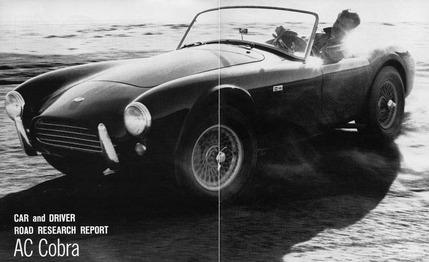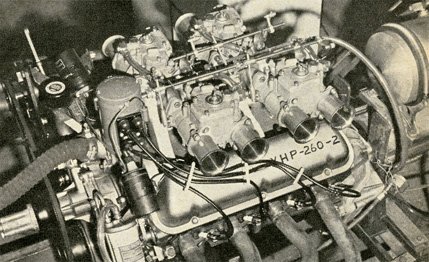
 Archived Road Test
Archived Road Test
Very simply stated, the AC Cobra attained higher performance figures than any other production automobile we have tested. And it did it with the "street" engine.
When Carroll Shelby builds a hotrod, he doesn't settle for any old chassis. In this case he has chosen one that has figured largely in hybrid projects for some time, and with great success. Coupling the stout AC chassis and lightweight AC body with a souped-up Ford engine, Shelby has come up with an extremely track-worthy sports car of very high performance indeed.
AC introduced the Tojeiro design as the AC Ace in 1954, powered by the ancient long-stroke six-cylinder overhead-valve two-liter. In 1956 AC made a deal with Bristol to use the famous BMW-derived Bristol power plant, and the AC-Bristol became a respected competitor in sports-car racing. The next engine option was the 2.6-liter Ford Zephyr engine, introduced in 1961, and now we have the Cobra.
As a fourth-generation hybrid, the car must be considered in light of its true purpose—SCCA class warfare. For such usage, it is accurately aimed, and viewed in that light the secondary considerations such as street use must necessarily come off second best.
Traffic, for instance, presents some uncomfortable problems. With the Cobra's very powerful engine developing maximum torque at 4,800 rpm, its high gearing, and its fierce clutch, every stop and start presents an interesting challenge in turning noise into motion. Its poor steering lock makes parking and maneuvering highly complicated. And finally, the battery does not get enough input current to cope with low-rpm running under normal conditions, let alone when using the heater, headlights, wipers, and the inadequate electrical fan mounted in front of the tilted radiator.


Tasca Ford of Providence, Rhode Island, which supplied the test car, suggested a smaller generator pulley to cure the constant discharge problem. A better solution might be the alternator, since it is already optional for the 260-cubic-inch Ford V-8 that is used in both Fairlanes and Galaxies.
If the car presents problems in traffic, one would assume that they would be dissolved by the open road—the opener and the more like a race course the better. In fact, the effortless sort of cruising that the car's performance would seem to promise is considerably handicapped by the encroachment on passenger space that the big V-8 makes. The engine is set back in the chassis enough so that the driver's accelerator foot gets cramped after a while in the only possible position (with the right leg bent inwards, toward the other, at the knee). Some relief is afforded by the long pedal travel of the throttle control, but it only comes with variations in speed.
On the credit side, in regard to the driver's creature comforts, is an interesting refinement in the clutch and brake pedals. These are hinged below floor level, and also at the pedal faces. As a result, the pedal faces maintain a constant total contact with the sole of the driver's shoe regardless of the depression angle. The pedals are set closely enough together to allow room for the left foot beside the clutch.
Classic simplicity is the term that first comes to mind for describing the AC chassis (designed by John Tojeiro for his own sports-racing car in 1952 and subsequently taken over by AC). The frame consists of two large-diameter steel tubes with heavy cross-members front, center, and rear. Narrow-diameter tubes are used to support the all-aluminum body. All wheels are independently suspended by means of lower wishbones and upper transverse leaf springs. The result is a chassis that has given away nothing, as far as handling goes, in production-class racing since its introduction.